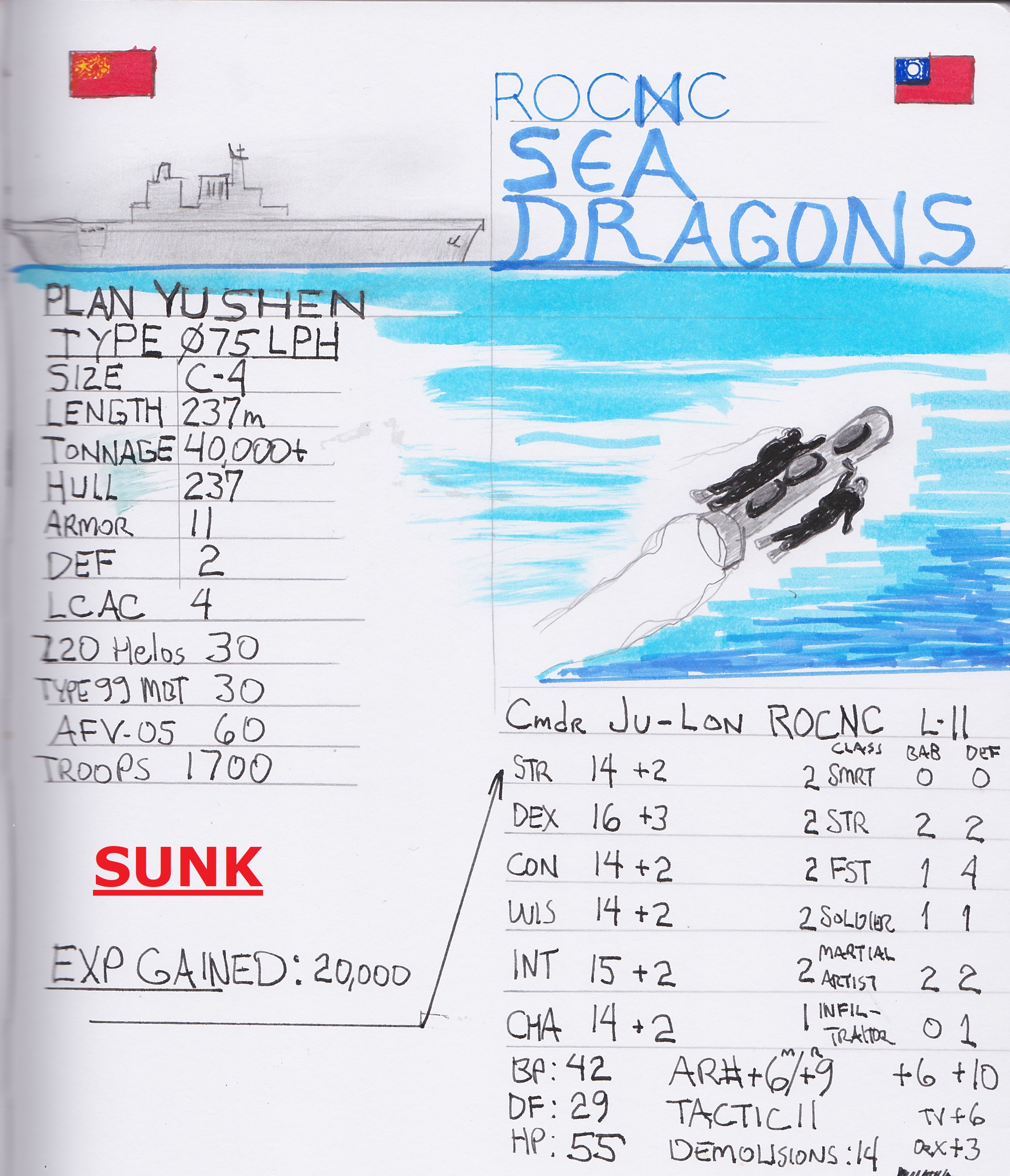
Hsinchu City Taiwan
[I walk with Captain Jon-Lon: ROCNC Sea Dragons Special Forces Leader as he supervises a company of demolition experts and civilian police bomb squad members as they sift through a half collapsed building off one of Hcinchu’s main Boulevards for unexploded ordinance]
“When the artillery shells, rockets and missiles started hitting our cities, we knew they would be here soon. The 70 miles of water separating us from the mainland was a great defense multiplier and had kept our Island independent for the last 70 years. The Reds had even disbanded their Marine Corp in 1959 after their failure to get an invasion even organized in the 2nd ‘Straits Crisis’ in 1958. They reformed it after their success in bullying the Vietnamese in the 1970s. They had started building specialized landing craft as early as the 1960s, but it wasn’t until after the 3rd ‘Straits Crisis’ in 1996 and they accelerated their landing ship program that we knew they were getting serious about taking the island by force again. They started designing and building larger and more sophisticated landing ships that we knew we needed to start working on as getting as many options as possible to counter them.
[“Is that when the Hai Long was formed?”]
The Amphibious Reconnaissance and Patrol Unit (ARPU) of the Republic of China Marine Corps and it’s Underwater Demolition Company, the Sea Dragons or as we like to call ourselves the “Frogmen” was formed after the yes. We began training with the USN Seals right after 3rd ‘Straits Crisis’ so yes that is true. The name Hai Long or Sea Dragons actually had something to do with the submarine we were based on, the Hai Lung.
[“She was the Taiwanese submarine that positioned you and your men to attack the PLAN invasion fleet in the early hours of May 2nd is that correct?”]
Yes, The ROCN only had two conventional diesel electric submarines, and the Red invasion force was nearly 300 ships. We knew a conventional attack would not stand a chance.
Luckily the ROCS Hai Lung SS-793 is a very quiet ship.
Soon after the first rockets started to fall on Taiwan in the early hours of May 1st, my team was rushed to Kee-Lung Harbor just outside Taipei. The Hai Lung and my team had practiced this before and luck would have it the Hai Lung had just finished re stocking for extended deployment. Maybe it wasn’t luck but some decent intelligence on what the Reds where planning. In retrospect the signs that Red China was actually going to go through with it this time was pretty obvious, at least in retrospect.
The got under way without being hit, which was lucky. The captain of the Hai Lung immediately put the ship on silent running because he already had confirmation from the Fleet flag ship, the DDG 1801 Kee-Lung that PLAN submarines were in the area. We expected them to try to intercept our ships entering or leaving harbor. If there were, they didn’t get us. We spent the next 12 hours slowly moving into position in the Taiwan Strait. Then the Hai Lung patrolled quietly at periscope depth listening to Taipei, the News and enemy com chatter until the Rockets stopped falling.
[“The PLA stopped their rocket bombardment around mid-night right?”]
The Rockets ended just after 10pm. The PLAN fleet arrived shortly after that.
[Captain Jon-Lon interrupts me as one of his men signal he has found something. We move back a few hundred meters. As we walk up the street, the captain receives another message over his personal radio; it’s a body, not a bomb, it’s safe to return. We watch as a pair of men leave the building with a body bag. The Captain continues...]
We suited up, grabbed our gear and exited out the ship’s airlock. The Sea Drones which were loaded in the torpedo tubes which they now expelled with a low pressure air burst. We were still about 35 miles away from the PLAN fleet and the Captain was eager to get us off so he could dive to a safe depth.
[“The Sea Drones are the torpedo shaped Under Water Vehicles designed by TELSA were they not?”]
Yes, UWVs actually date back to WWII, some of the Italian ones even look something like the ones we acquired from TESLA. The big difference was that these American made ones were both VERY quiet and fairly fast. The lipid mines we used to attach to the bottom of their ships however were actually Mainland Chinese ordinance.
[“How did you end up Communist Chinese weapons?]
They were the best ship killers we are correctly aware of and readily available in the Middle East through the right connections. They are the same weapons the Iranian Revolutionary Guards on Saudi Oil tankers the last two years.
[“But didn’t all those attacks fail?”]
Not at all, every ship they hit was disabled. Please realize how hard it is to sink a modern oil tanker especially the big ones. Crude oil is not as flammable as it is portrayed in the movies. It’s also lighter than water, which is why super tankers can get so large. Any other ship and they would have went straight to the bottom. Excellent mines. The Iranians were more than happy to sell us some of their surplus.
[“So that’s how Yushen was sunk? Over 2000 PLA soldiers drown, with one of their own mines?”]
That’s correct, their new Type 075 LPH went down like a rock. Probably didn’t help that they rushed that ship into service that was the ships shakedown cruise. Helps to have a crew properly trained in damage control.